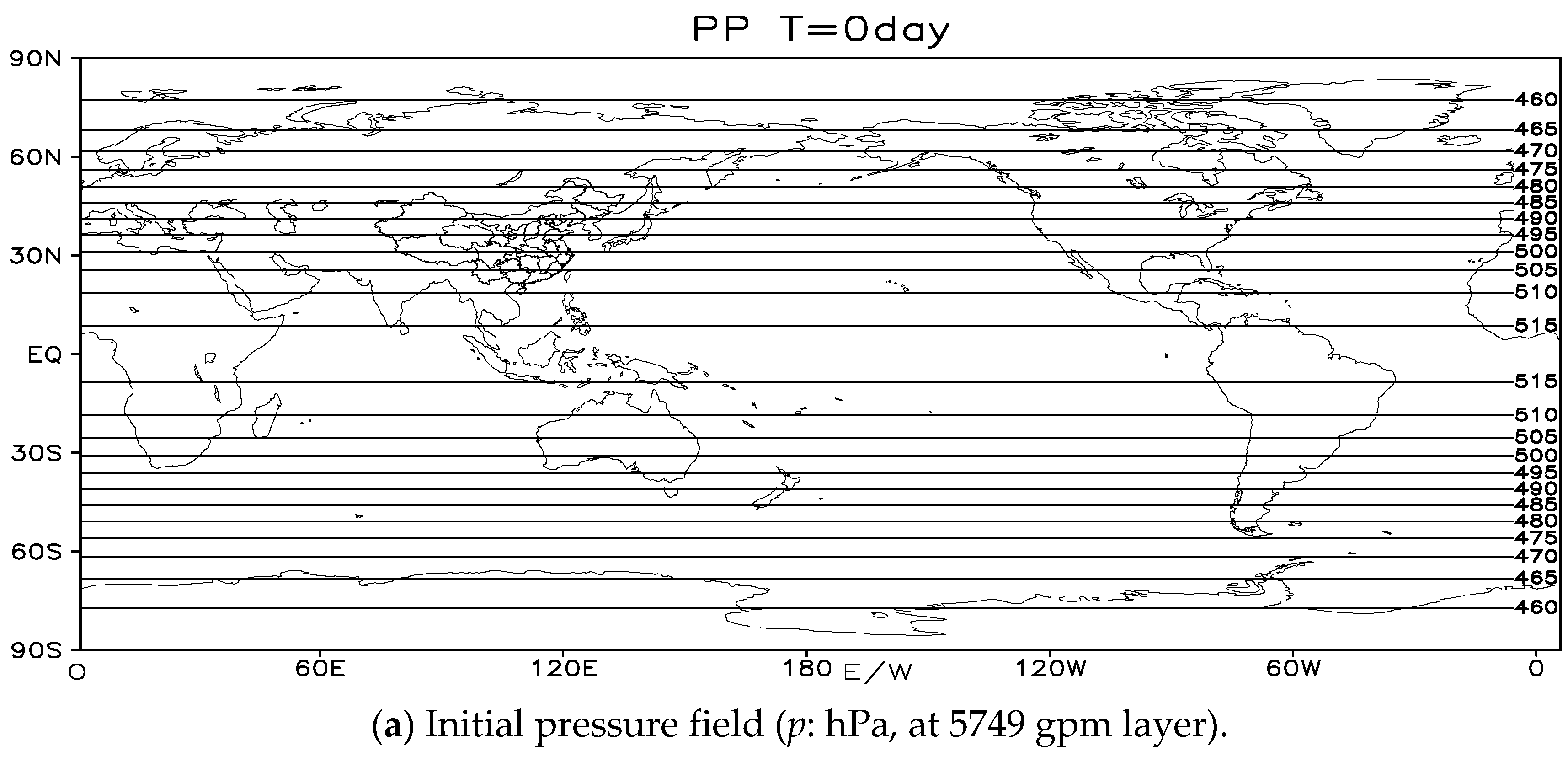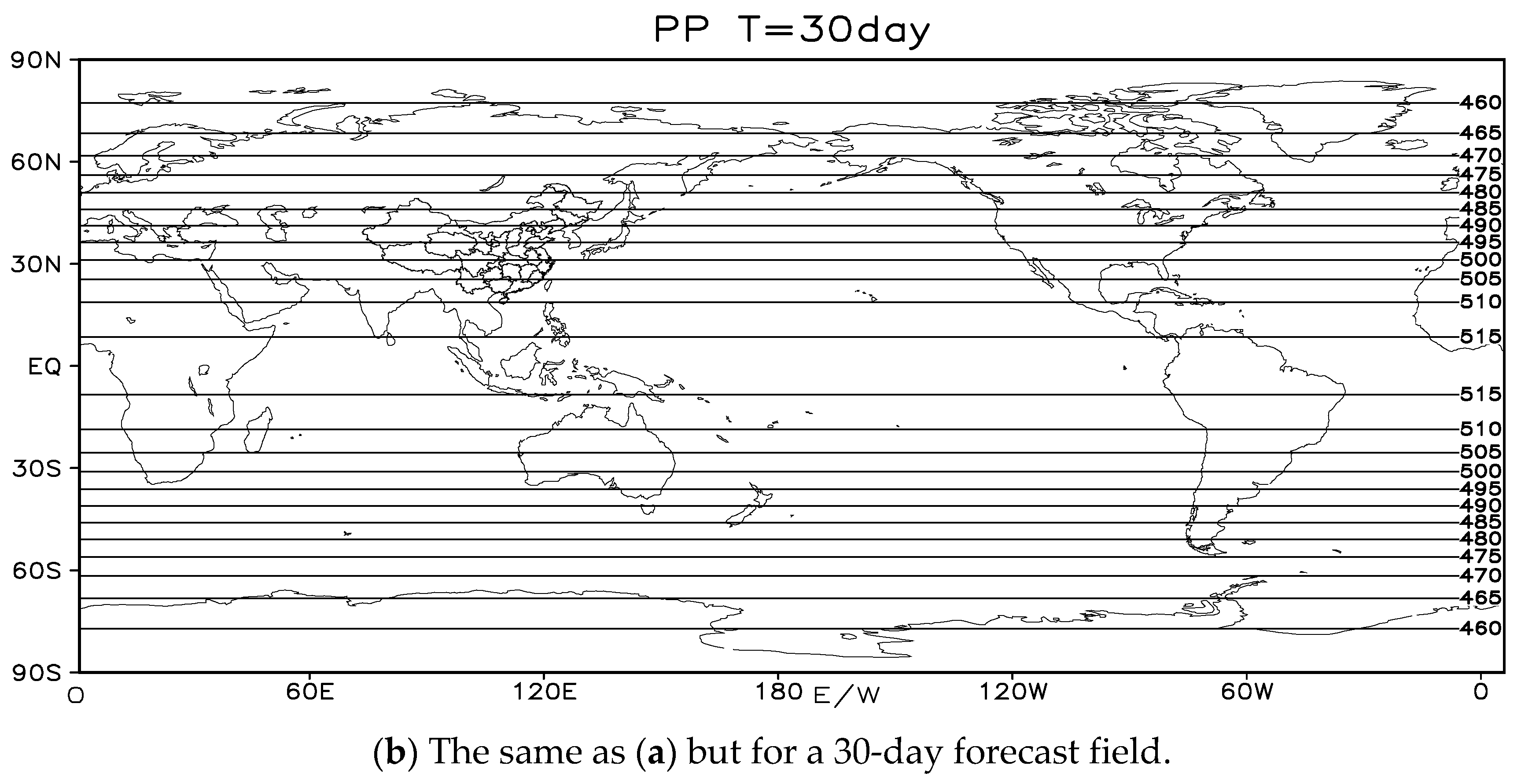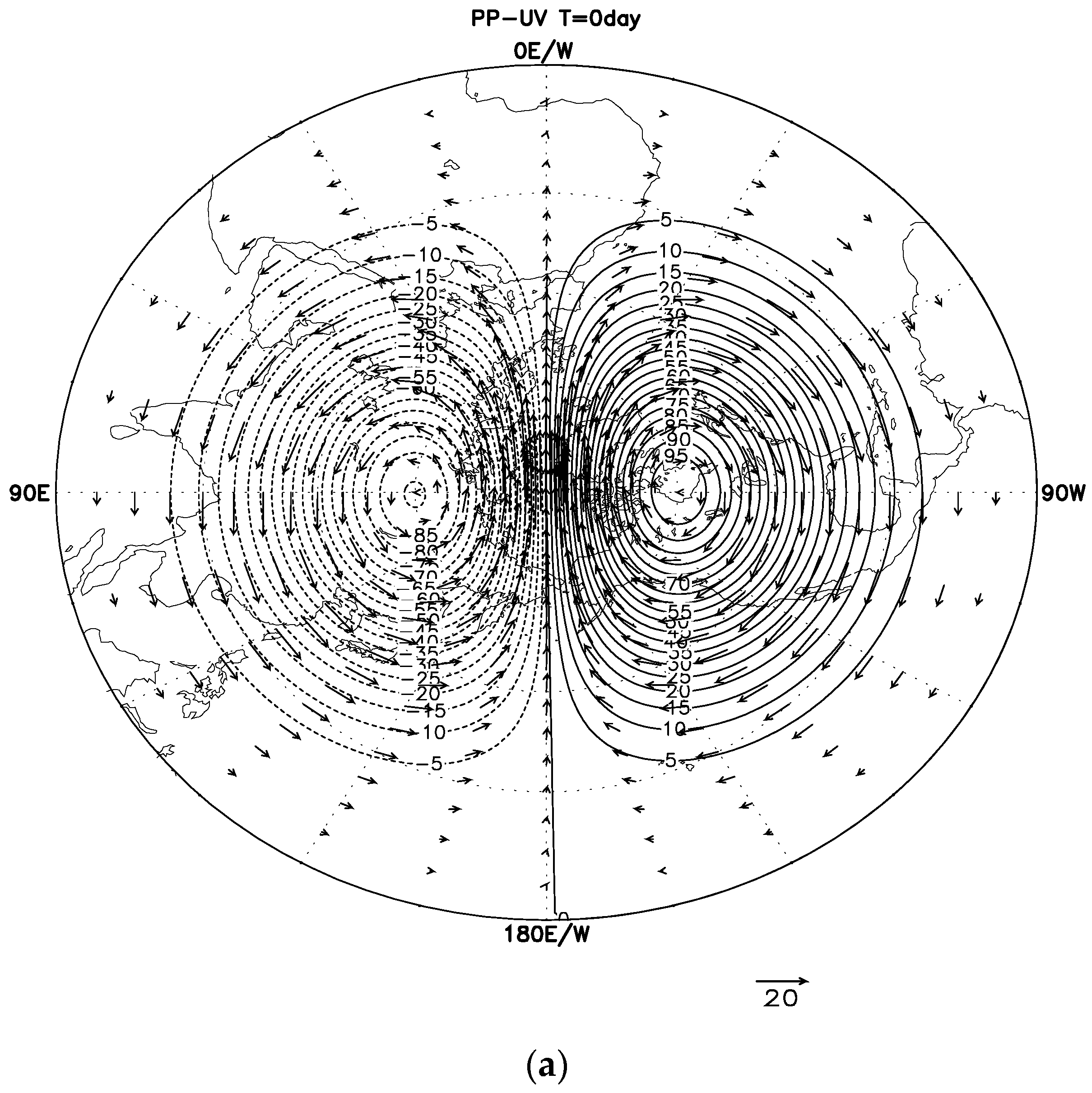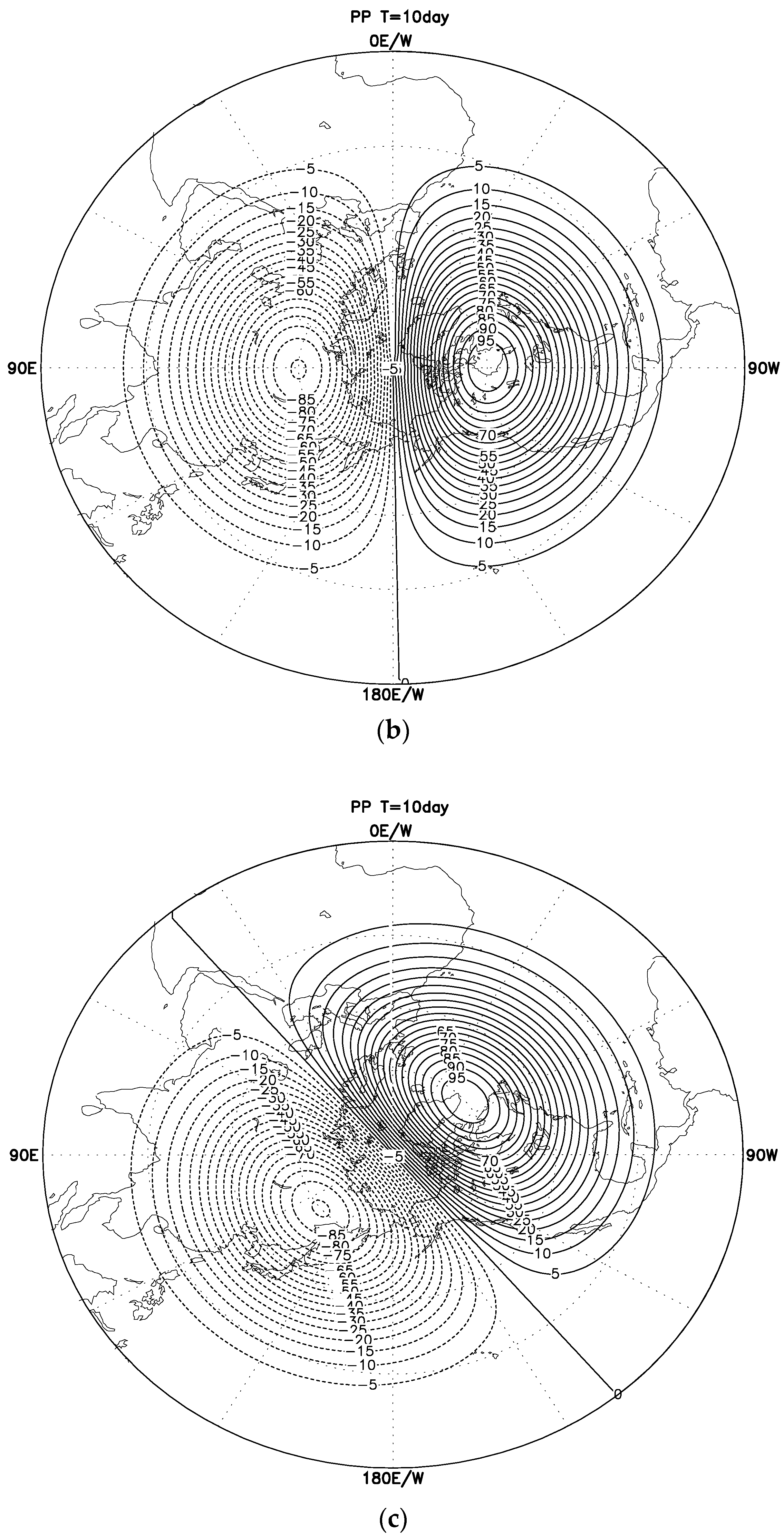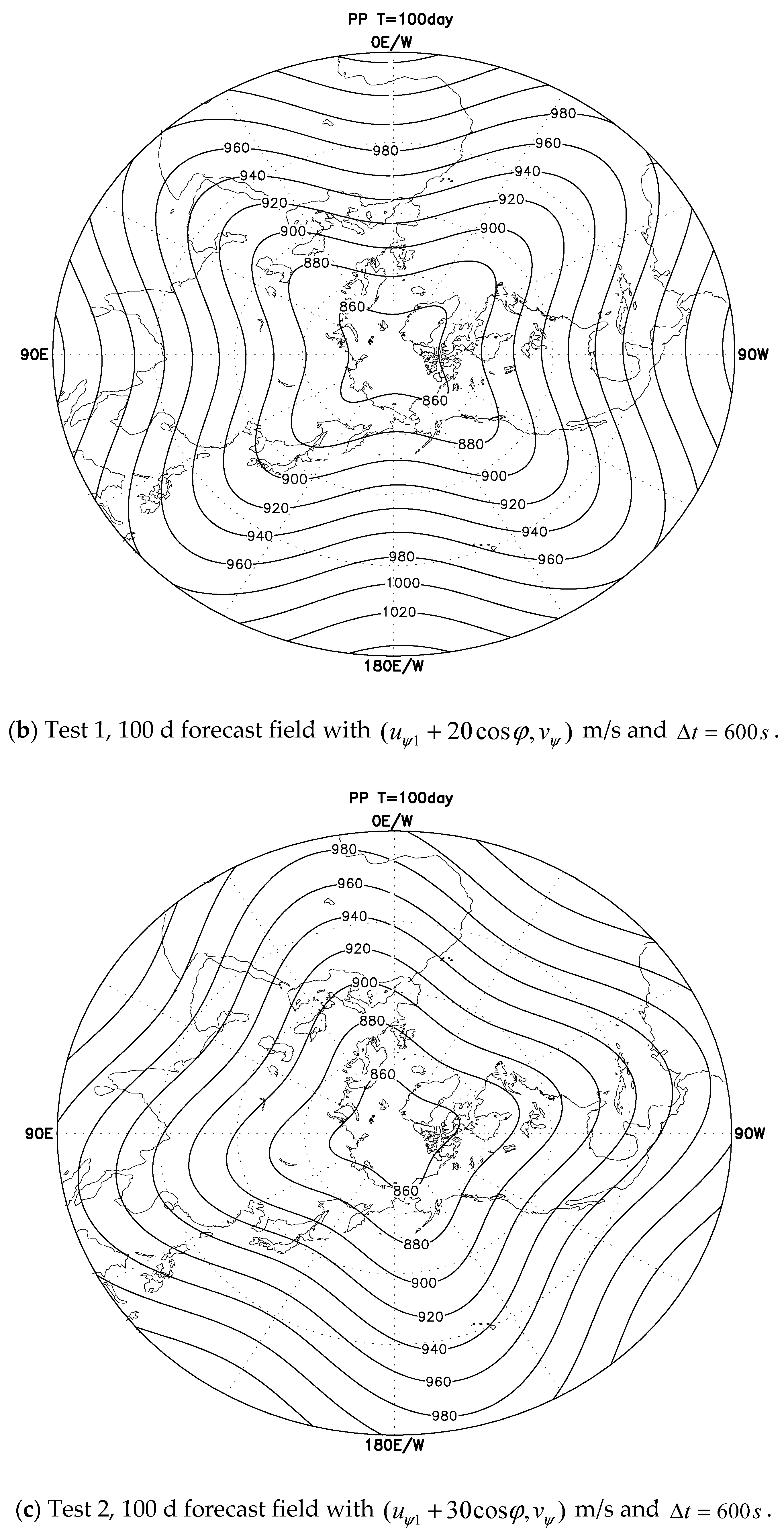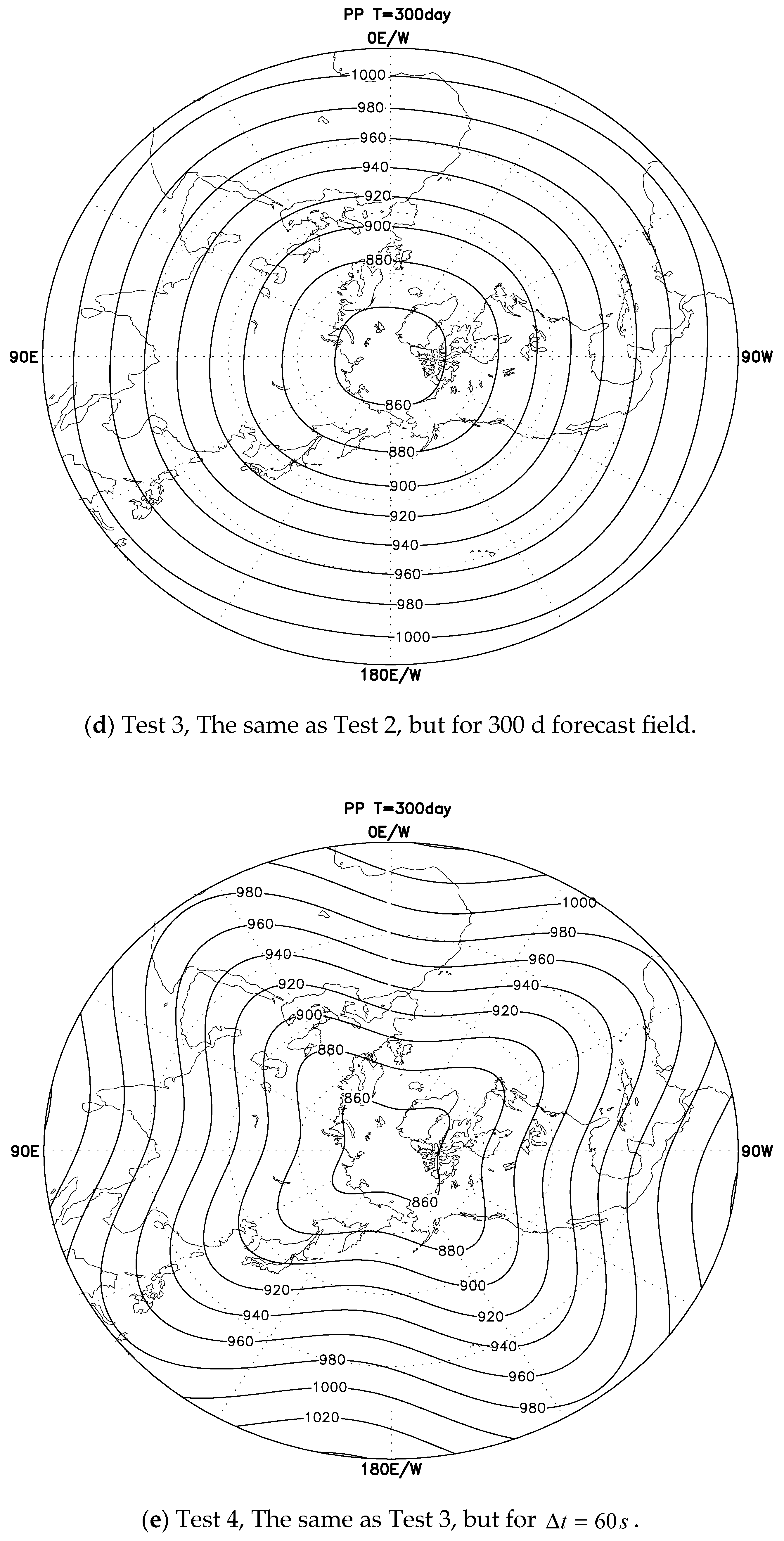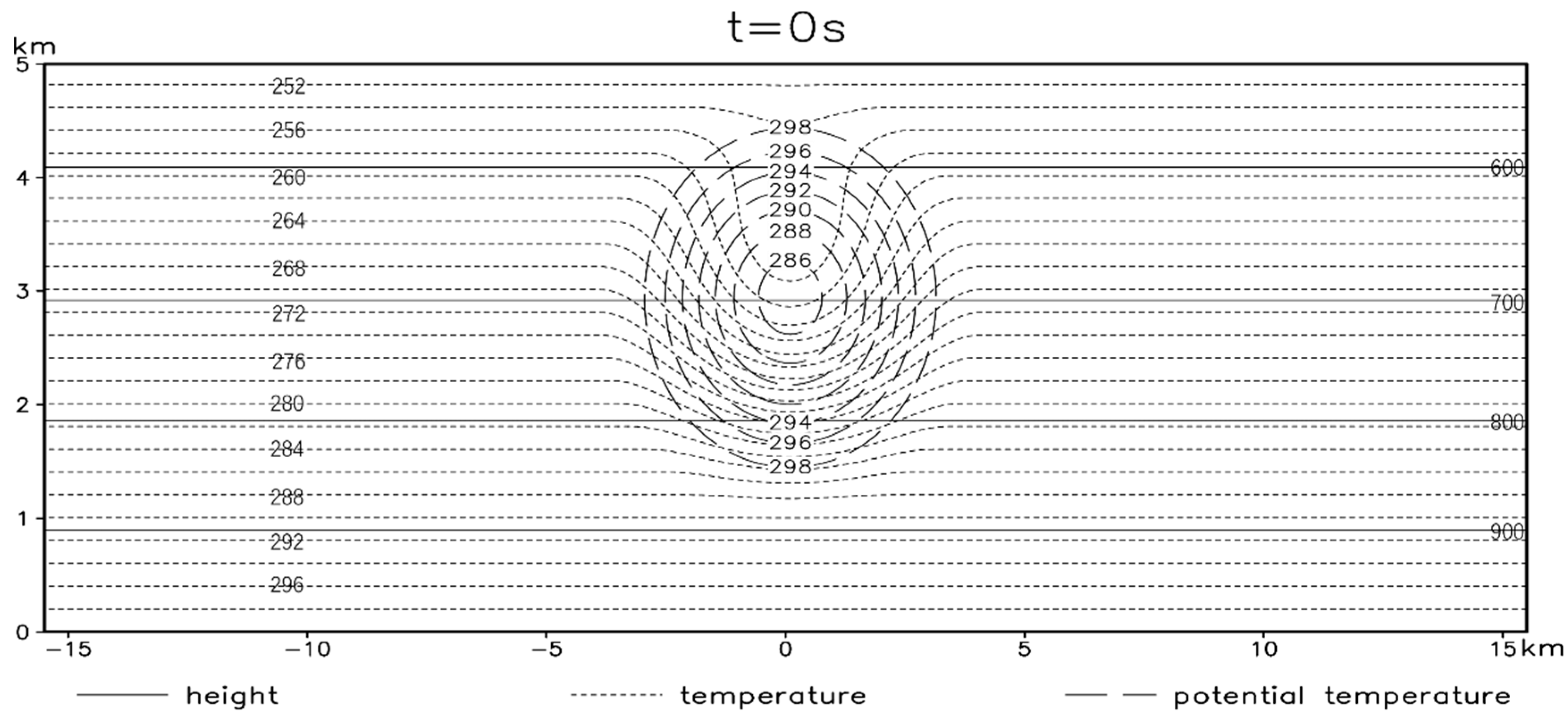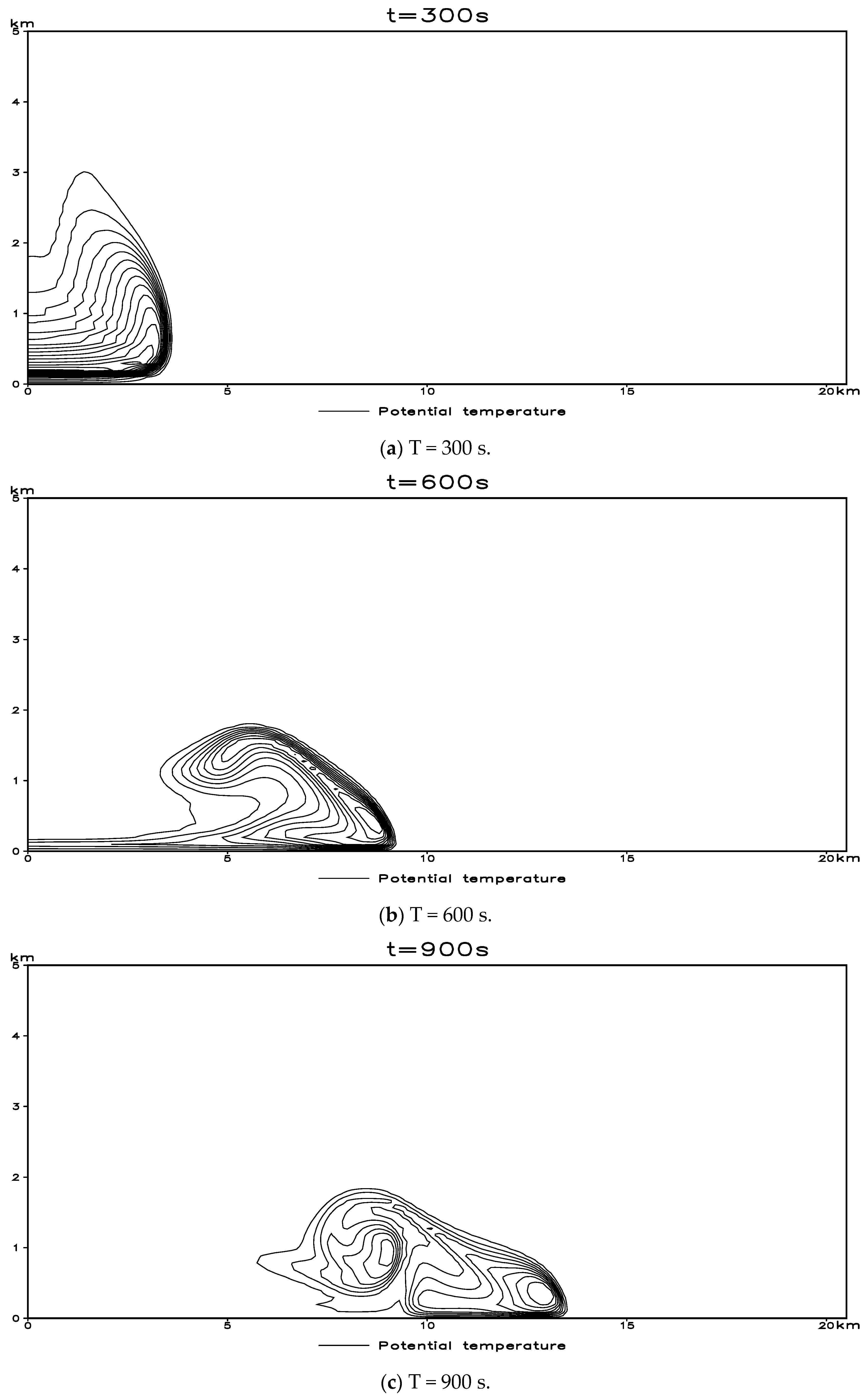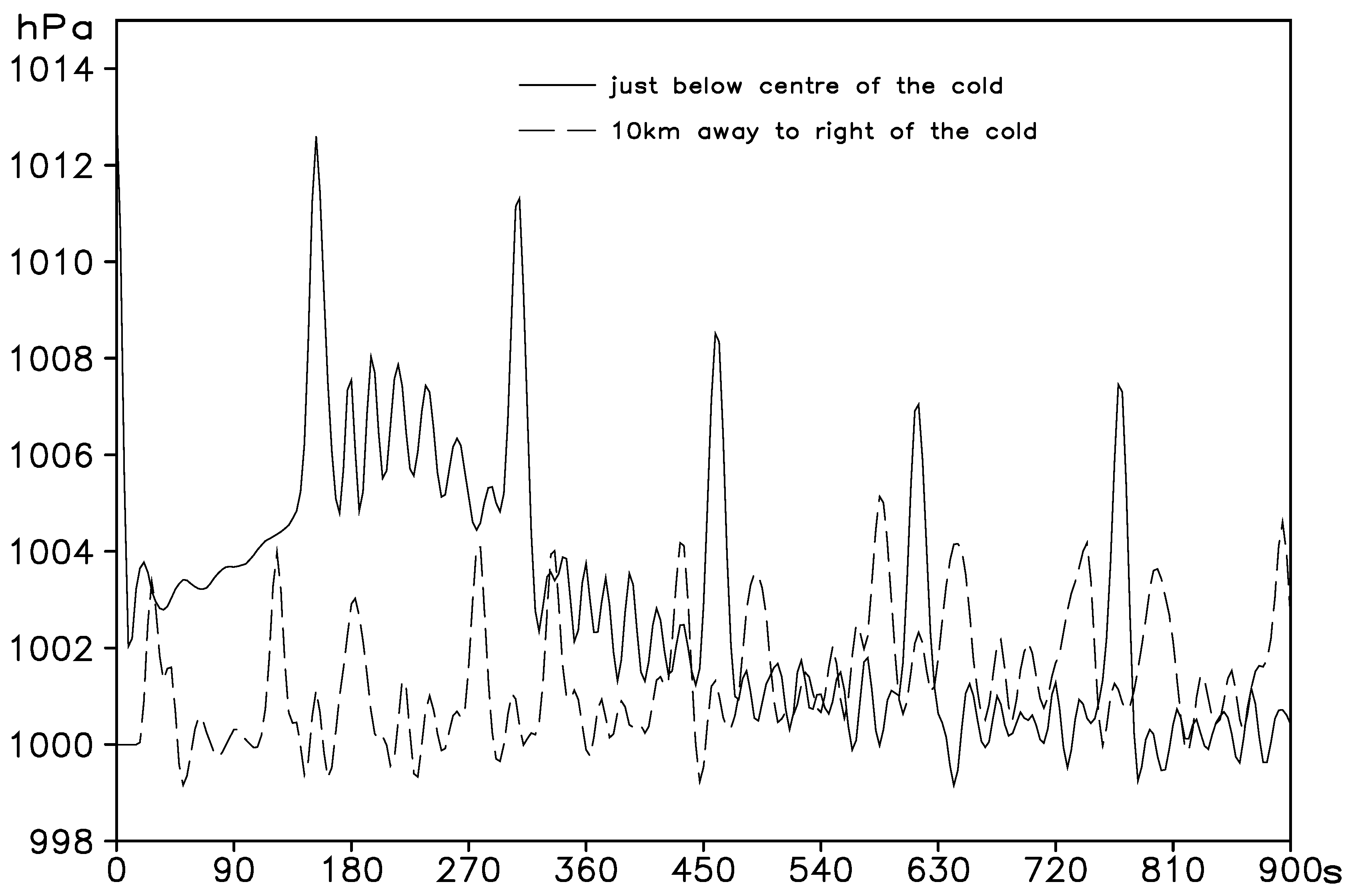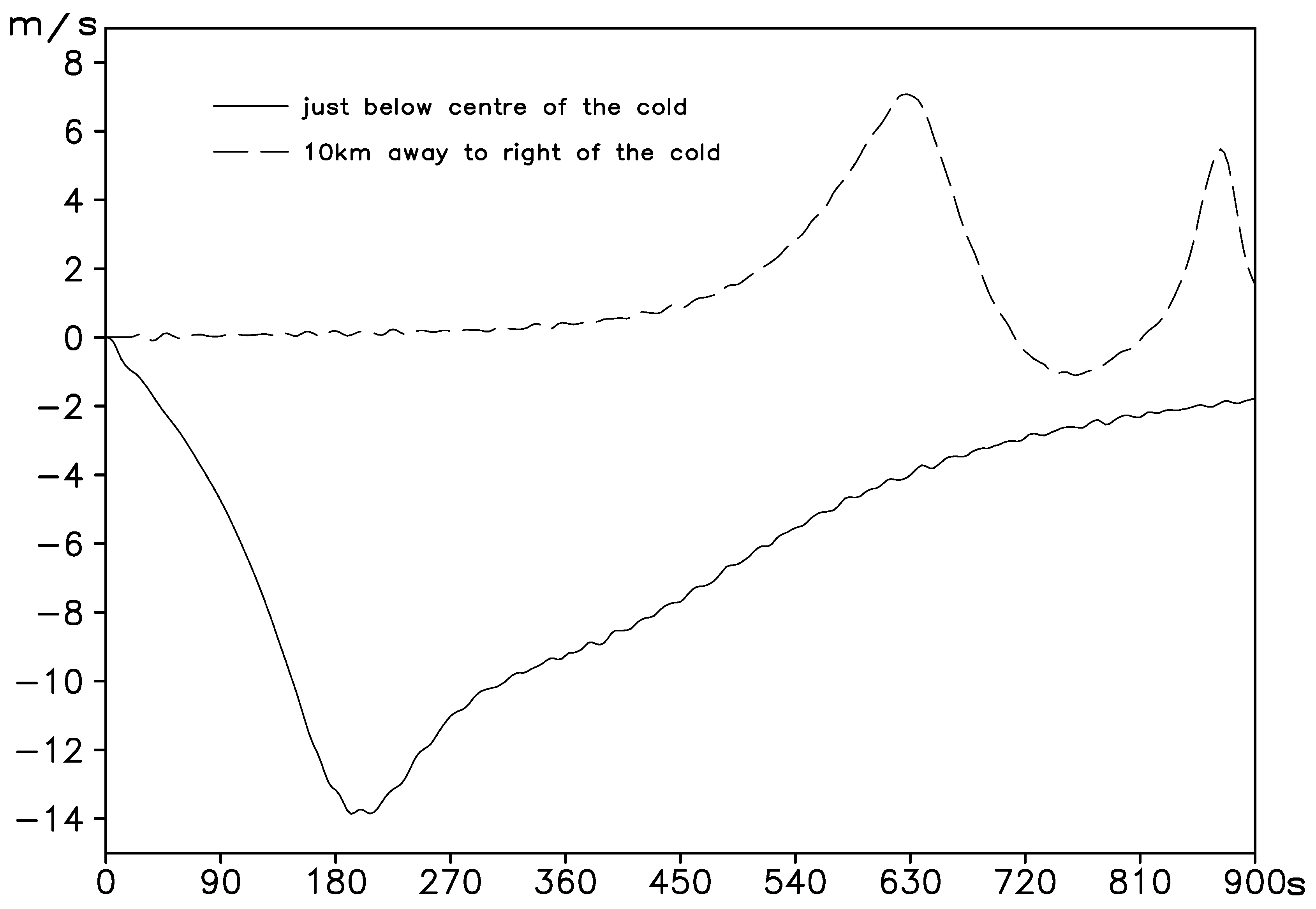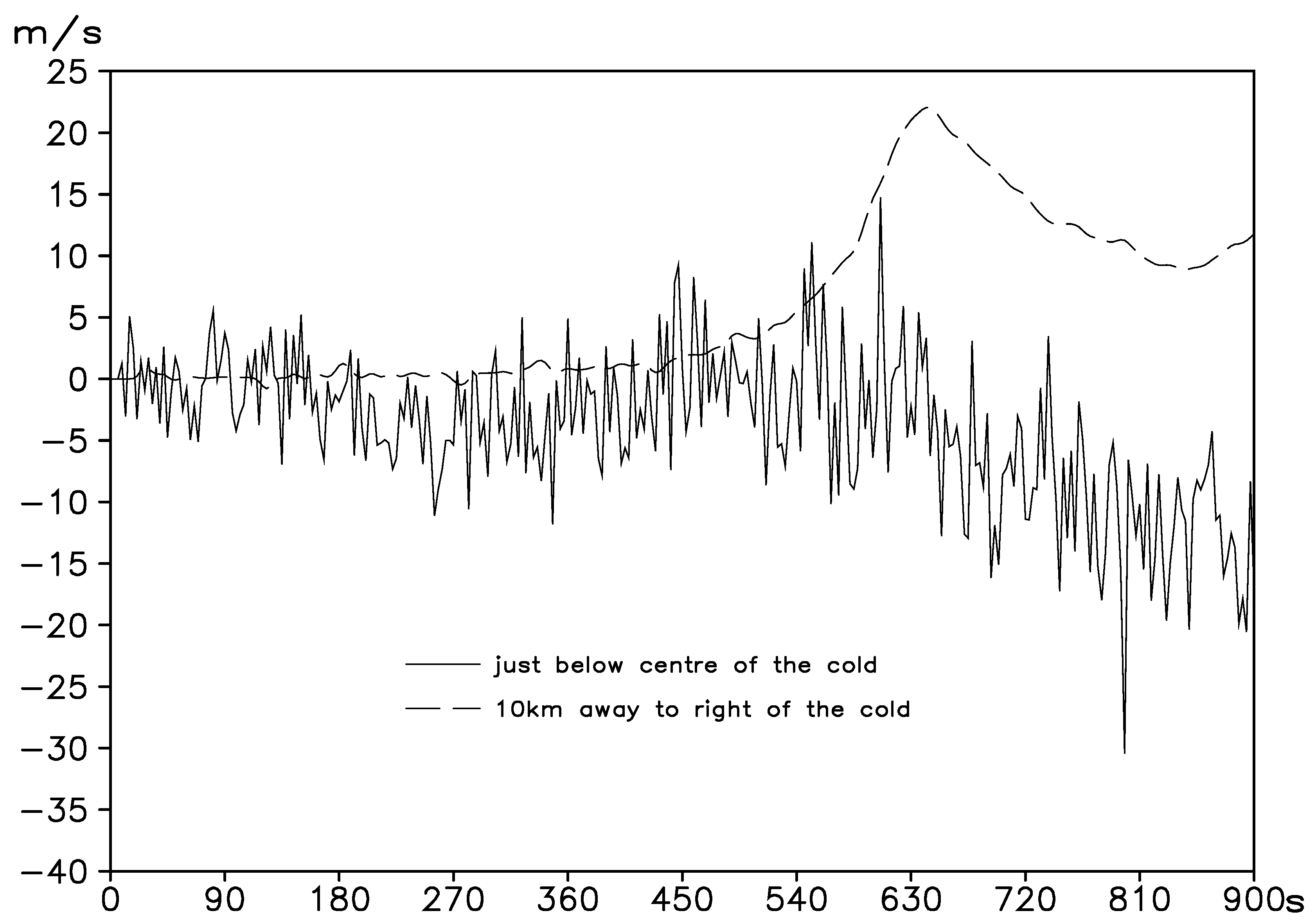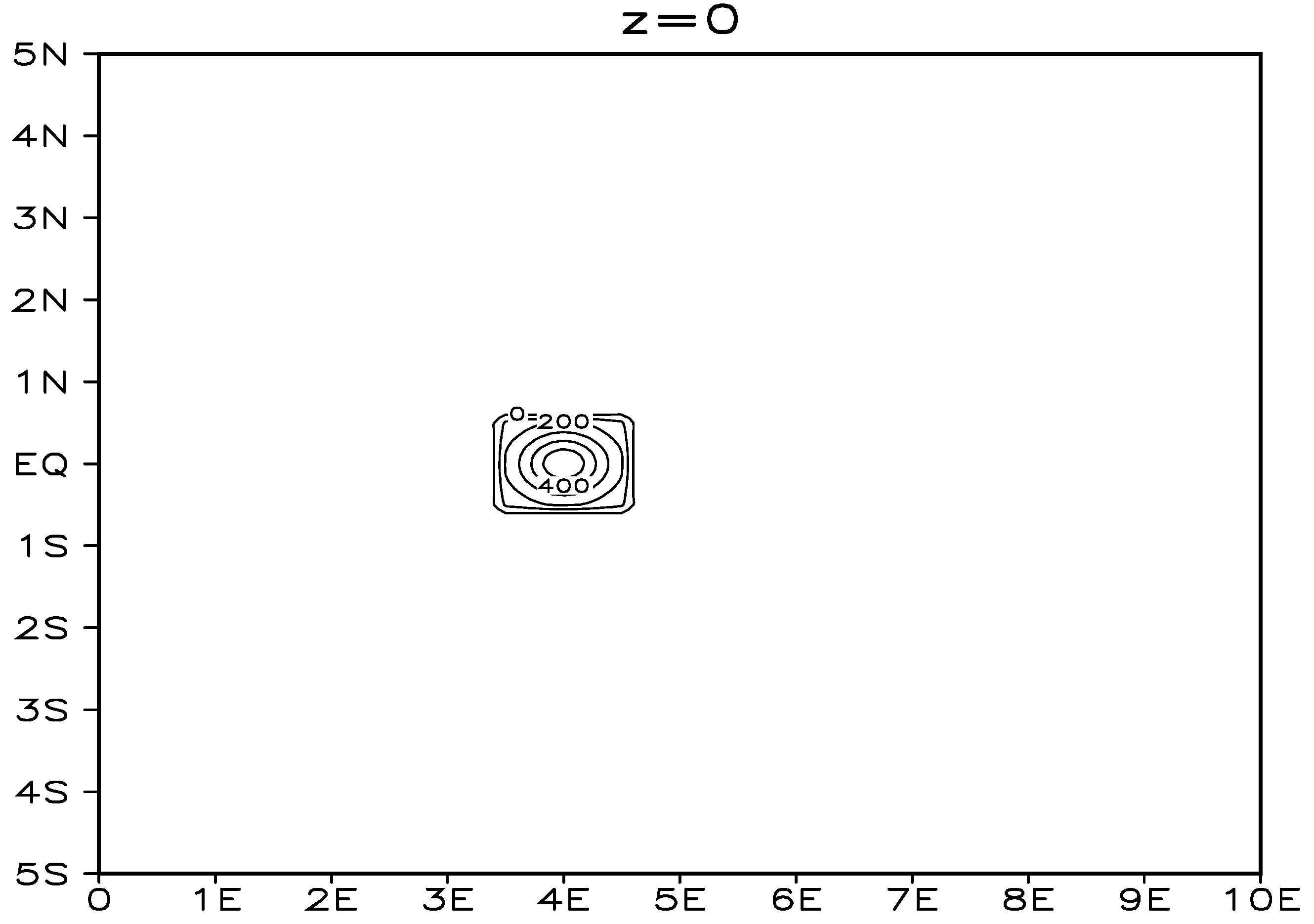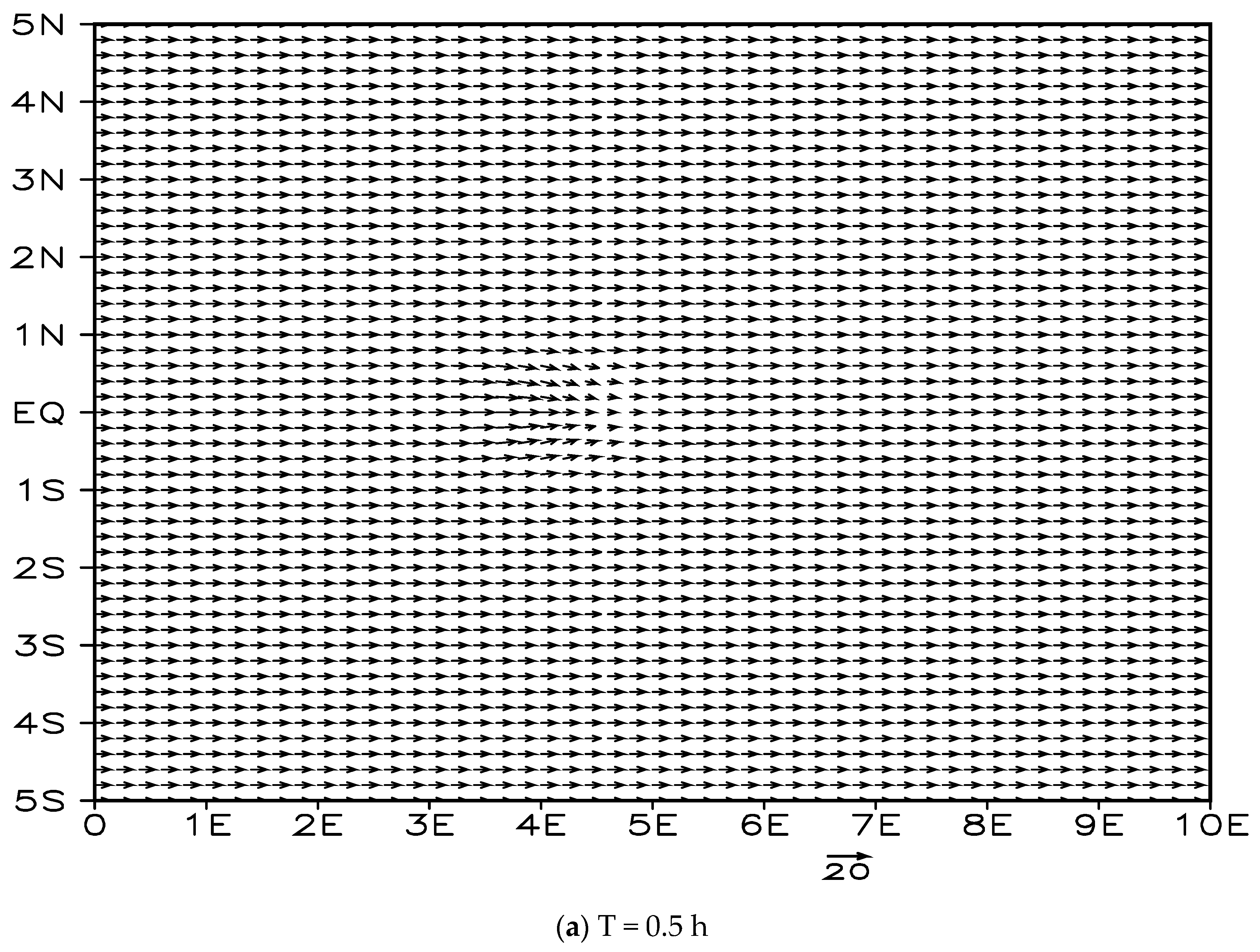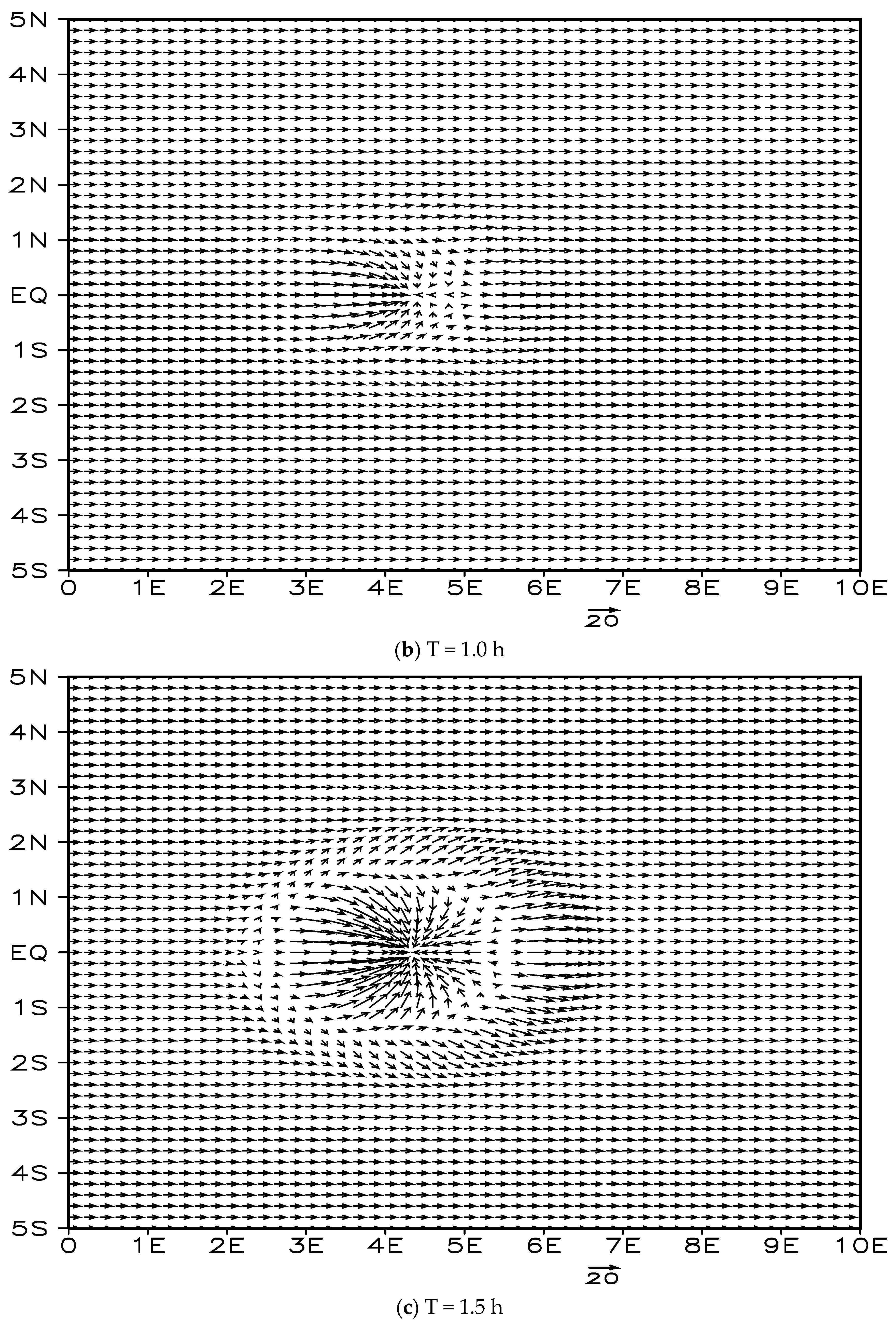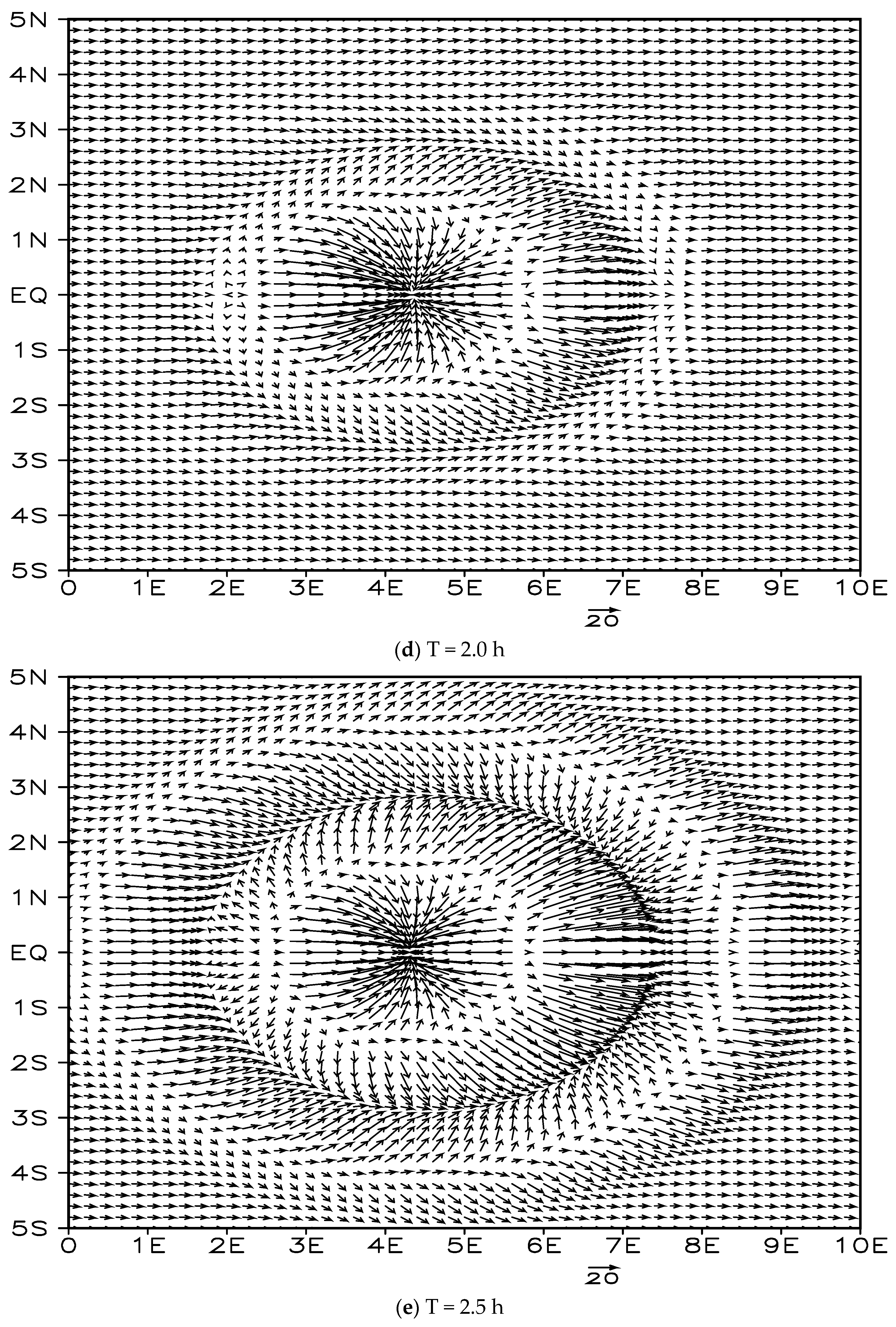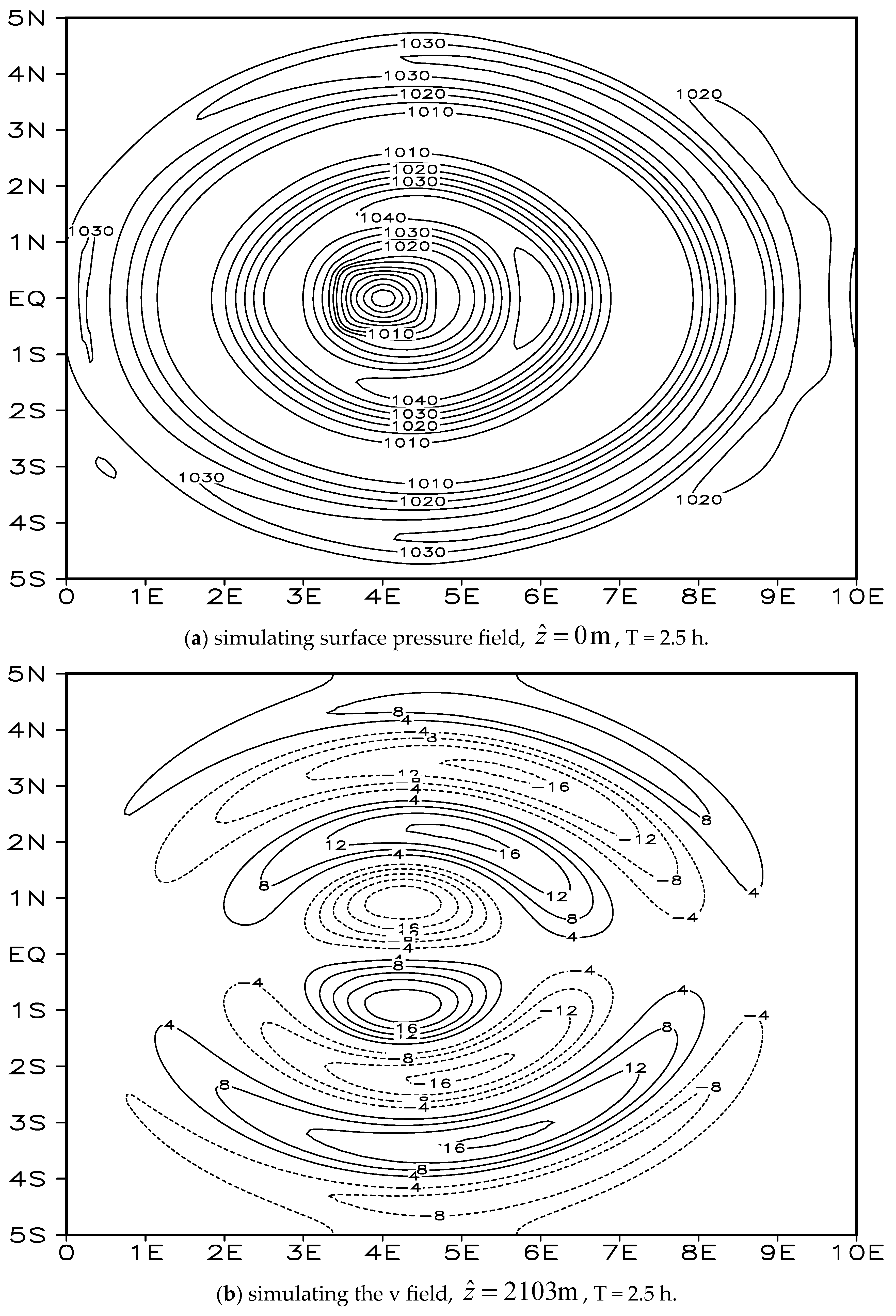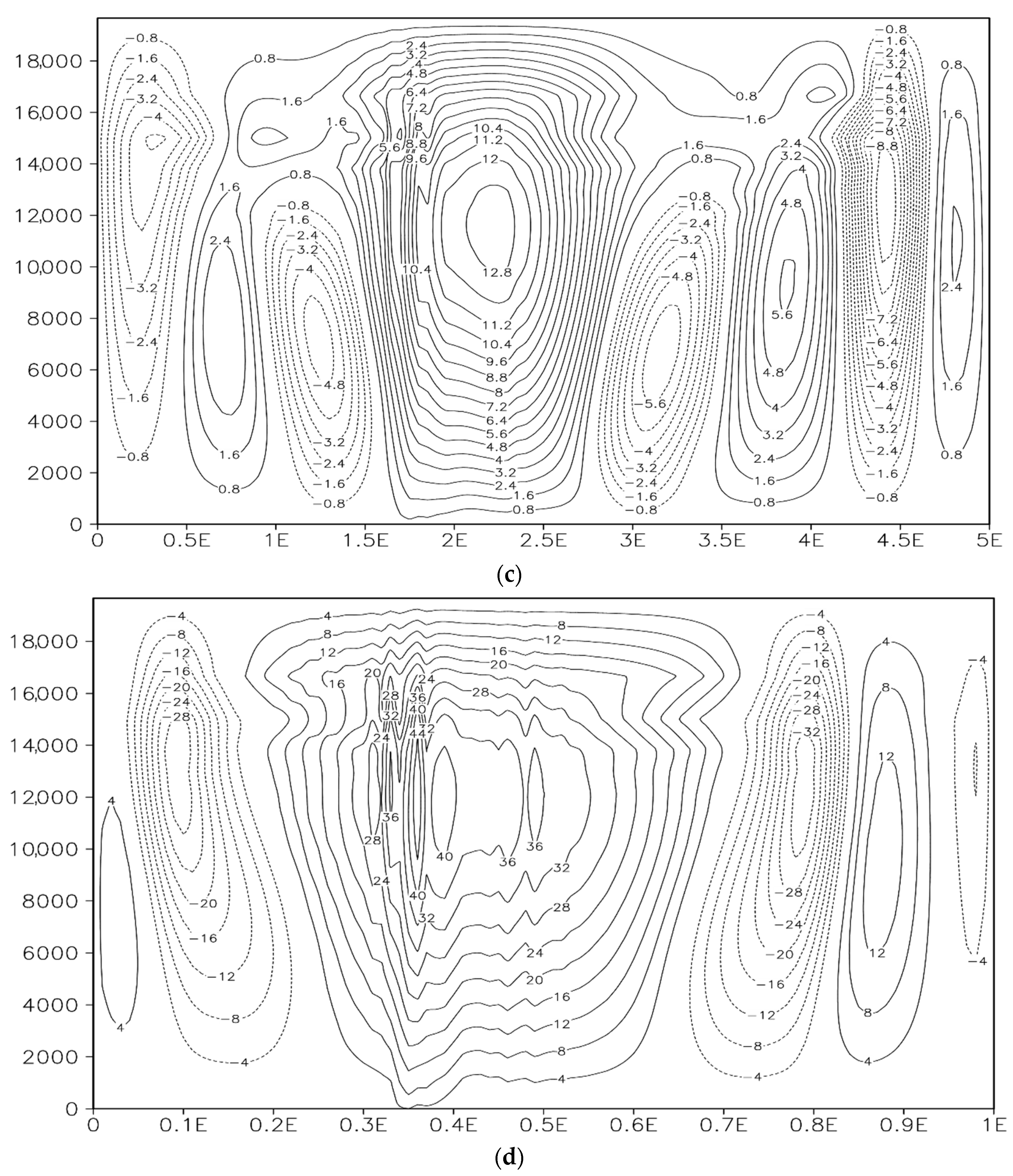1. Introduction
Our paper suggests that by using the cubic spline function, we can build a dynamic framework of numerical modeling based on spatiotemporal second-order precision prediction equations, and then complete a global static/non-static, multi-nested weather prediction numerical model. This should be the development direction of the so-called “Difference Model”. Moreover, using the “line, surface, and volume” cubic spline function to fit three-dimensional variable fields (such as pressure, temperature, or wind), so these become second-order differentiable continuous fields, means that we can replace “discrete Fourier transform” with “continuous Fourier transform” in the Spectral Model. This offers an effective method to improve the calculation accuracy of the Spectral Model and reduce the computational workload.
Many countries (i.e., the US, UK, Japan, Canada, and China) have developed plans to establish globally/regionally unified grid mesh numerical models with horizontal resolutions of 1–100 km. However, the global grid point model’s forecast level has yet to outperform the currently widely adopted global Spectral Model. In recent years, there has been a consensus on how to develop a numerical model system of weather forecasting. It is ranked in order of importance as follows: dynamic core–physical processes (radiation parameterization, cumulus convection parameterization, land surface processes), data assimilation (initial value field, four-dimensional variation), diagnostic analysis, and software support (parallel computing, graphical imaging). The dynamic framework of current numerical models, including the Difference Model and the Spectral Model, has the time integration scheme with less than second-order spatiotemporal accuracy, and its spherical grid scheme, terrain scheme, and reference atmosphere scheme are all under study and improvement.
The mathematical foundation of the Spectral Model is a two-dimensional spectral (spherical harmonics) expansion, which calculates the horizontal upstream point “analytically”, whereas the grid point model generally uses some cubic function interpolation to calculate the upstream point. Such an approach raises a simple question: Is it possible for the cubic function model to outperform the Spectral Model?
Furthermore, we must ask ourselves the following: What mathematical function should be used to fit a physical field as an unknown “primitive function”? First, let us look at pure mathematics.
It is known that two-dimensional spectral expansion is only “convergent” and can achieve “optimal” least square error. However, the spectrum has a few mathematical shortcomings: (1) the horizontal vector field of the spectrum is mathematically singular at the poles (i.e., the spectral model does not forecast for the poles); (2) there are spurious peaks in the plane (termed the “Gibbs phenomenon”); (3) the spectrum is not suitable for the vertical format, fitting neither the upper/lower nor side boundaries, and thus is not suitable to be the global uniform numerical model; and finally, (4) the spectra calculation effort increases rapidly as resolution increases.
There are two types of cubic function interpolation in mathematics, namely, the Hermite “double osculating” cubic spline function and the Lagrangian cubic function.
Cubic spline functions include the cubic spline, bicubic surface (Fergusion, 1964 [
1]), and tricubic cube, all of which have the following mathematical laws/properties:
- (1)
Convergence to the primitive function and its first- and second-order derivatives (i.e., convergence);
- (2)
Optimal approximation to the primitive function’s second-order derivative (i.e., optimality);
- (3)
Second-order central difference being their linear principal, and second-order accuracy difference & integration (i.e., difference, integrality, accuracy);
- (4)
Natural cubic splines with the least amount of total curvature (i.e., stability);
- (5)
Periodic, unequally spaced cubic splines (i.e., periodicity, point selection);
- (6)
Multiple cubic spline mathematical boundaries or concatenating other continuous functions (i.e., boundary adaptability, concatenation);
- (7)
The cubic spline smoothing function (i.e., smoothness) eliminating discontinuous cusps or wraps;
- (8)
Preserving latitudinal and longitudinal symmetry, as well as polar and equatorial symmetry (i.e., symmetry, non-singular at poles).
For local interpolation, the Lagrangian cubic function is used. Bilinear interpolation, for example, refers to the 16-point fit and interpolation on a variable field, which is similar to the value obtained from the interpolation of the cubic spline function.
Collectively, the mathematical laws and properties of the cubic spline function are referred to as the “spline format”, and the spline format is appropriate for developing a globally accepted “grid point” numerical model (called a “Spline Model”). The Spline Model has a better mathematical foundation than the Spectral Model and, accordingly, it may stand as the best option. Therefore, we propose that a global, multi-nested Spline Model should replace the popular modern-day global Spectral Model and another mesoscale model in the future.
Because the spline format has line, plane, and volume convergence as well as second-order derivative optimality, the physical fields and their first-order derivatives/slope, second-order derivatives/curvature, and second-order mixed partial derivatives/deflection are fitted so that each physical field (i.e., scalar and vector fields) is a second-order derivative. This allows for the upstream point to be computed “analytically”. The “convergence” of the spline format implies that if the space-time resolution is high enough, the upstream point can always be obtained; in other words, “the weather is predictable”.
Layton (2002 [
2]) completed a three-time-level Euler integration semi-implicit scheme for the shallow water wave equation in the spline format, and the integration test demonstrated that it is a high-order, accurate, and computationally stable method. In comparison, the spectral method encounters Legendre transformation high-order complexity.
In the description of atmospheric motion, the dynamic core of the numerical model (i.e., physical field spatial discretization, time integration) determines the mathematical properties (including model accuracy), physical conservatism, and computational stability of the model.
A non-hydrostatic and fully compressible dynamic core provides the most realistic description of the atmosphere’s strong convection weather system. Daley (1988 [
3]) discovered that when computing normal mode harmonics for zonal waves with a number greater than 400, the hydrostatic and non-hydrostatic schemes differ significantly, and they implied that the hydrostatic scheme is not appropriate for describing waves with wavelengths of less than 100 km. The fully compressible pressure equation, on the other hand, has 3D divergence, which invariably produces acoustic waves, so “calculating acoustic waves” is the key to forecasting the fully compressible pressure field. Durran and Blossey (2012 [
4]) argued that the fast “acoustic wave”, which is not meteorologically significant, limits the integration step of the explicit temporal difference scheme, and that if the acoustic wave is retained, it is necessary to ensure that the “noise” of the barometric disturbance does not cause computational instability.
Dudhia (1993 [
5]) created a non-hydrostatic mesoscale numerical model, MM5, with multi-physics processes, which was followed by the introduction of a new generation of the American numerical model, the Weather Research and Forecasting Model, both of which used a filter subprogram to filter out fast waves, that is, acoustic waves combined with small-scale gravity waves.
In non-hydrostatic numerical models, generally, the “reference atmospheric profile” must be introduced, causing a “perturbed” barometric field wave on the “reference atmospheric profile”. A corresponding linear perturbation treatment on the pressure and temperature field must then be performed to deduct the vertical pressure gradient force and the reference atmosphere weight, under a static constraint relationship with gravity, so that a non-hydrostatic perturbation balance is struck. This should be performed to improve the accuracy at which vertical pressure gradient force can be determined.
It is generally accepted that the truncation error of spatial differentiation is much larger than that of temporal difference. Additionally, the quasi-Lagrangian integration scheme not only improves the calculation accuracy of spatial difference but also bases the time step solely on the difference accuracy of the upstream point, rather than the differential stability. However, unlike the Euler difference conservation scheme, the theoretical design of the quasi-Lagrangian difference conservation scheme has not yet been devised.
Gu (2011 [
6]) completed the derivation of the fourth-order space-time residual error with quasi-Lagrangian and Euler equations using Taylor series expansion. They demonstrated that using the spline format to find the upstream point path of the quasi-Lagrangian method has the same mathematical basis as using spline-format slope, curvature, and deflection to find the Euler displacement. Both the numerical solutions have second-order temporal and spatial accuracy, and fourth-order temporal and spatial accuracy can be obtained, though the cubic spline fitting calculation volume grows exponentially.
In numerical models, quasi-Lagrangian integration schemes are commonly used to describe everything from gravity waves to atmospheric long waves. For example, ① the time-split integration scheme (KW scheme), with a long step for horizontal displacement and short step for vertical displacement and ② the semi-implicit semi-Lagrangian integration scheme (SI-SL scheme). In the latter case, Robert et al. (1985 [
7]) proposed an integration scheme combining the semi-Lagrangian method for advection terms and the semi-implicit scheme for gravity wave terms and compared it to the Eulerian integration scheme at the same spatial resolution, where the former time step is taken to be ten times that of the latter, and they found that the calculation results were comparable. The SI-SL integration scheme is thought to be capable of preserving a physical property that can be described as “non-hydrostatic and fully compressible” (Pinty et al., 1995 [
8]).
Meanwhile, the GRAPES (global/regional assimilation and prediction system) globally/regionally unified (grid point) numerical model, developed in China, uses the Lagrangian cubic function “bilinear (local area) interpolation” to calculate the upstream point. This model has a large time step and avoids acoustic waves by using SI-SL integration. However, the large step length causes large dispersion, which results in large truncation errors in the coupling of physical processes, as well as the need to solve the generalized conjugate residual Helmholtz equation of the 3D barometric perturbation, which necessitates a large computational volume. This results in a high-resolution numerical model and a reconsideration of explicit integration schemes.
The horizontal pressure gradient force on the grid point terrain versus terrain-height coordinates has a large relative error. To extend the numerical stability limit over steep slopes, Günther Zängl (2012 [
9]) developed a truly horizontal pressure-gradient discretization based on the ideas formulated by Mahrer in the 1980s. Since the pressure gradient is evaluated in the terrain-following coordinate system, this necessitates a metric correction term that is prone to numerical instability if the height difference between adjacent grid points is larger than the vertical layer spacing. Su et al. (2018 [
10]) proposed a three-dimensional reference atmosphere for GRAPES_GFS to replace the one-dimensional reference atmosphere, the isothermal atmosphere, in order to reduce the order of magnitude of the model dynamic core nonlinear terms, re-derive the dynamic equations, and verify and improve dynamic core accuracy using the ideal test. Through testing GRAPES, Liu et al. (2011 [
11]) concluded that 6× grid spacing is an effective resolution scale for grid point topography.
Cartesian coordinates are appropriate for describing Newtonian motion. When using spherical coordinates to describe atmospheric motion and calculating the motion of a continuous wind field, the 3D wind and displacement fields must be decomposed into unit vectors on spherical coordinates (called “vector discrete”, Bates et al., 1990 [
12]). The traditional vector discretization method involves moving the air parcel from the upstream point to the Euler forecast point in the direction of the unit vector in the middle of the path; this clearly does not treat the wind field as a continuous vector field.
Gu (2013 [
13]) introduced a second-order derivable bicubic surface terrain, with a constant slope, curvature, and deflection, and established the bicubic surface terrain and the terrain-following height coordinates. Based on these, it can be calculated for the horizontal barometric pressure gradient force over the bicubic surface terrain with second-order accuracy and inverted the sea level pressure field.
As the core of the numerical model, the dynamic framework needs an effective and referable method to verify the correctness of its scientific scheme and programming. Conducting an exact test is an effective method and has been recognized and widely applied globally (Yang et al., 2007 [
14]; Yang et al., 2008 [
15]; Gavrilov et al., 2015 [
16]; Li et al., 2022 [
17]). Furthermore, all newly developed numerical forecast models should go through a similar ideal field test. However, the design of an ideal test scheme based on the characteristics of a model remains a challenge. The general strategy is to create ideal initial values for a specific reduced physical model or design some model initial values to satisfy specific kinetic constraints, turn off factors that are irrelevant to the process under consideration, and then test the accuracy and stability of the model’s dynamic core using ideal field integration tests.
Since different numerical schemes are used for different models, the properties of the model to be validated need to be considered in the design of the ideal field test scheme. The following ideal field tests were created based on the GRAPES model’s non-hydrostatic, semi-implicit semi-Lagrangian, and multi-scale properties (Yang et al., 2007 [
14]): the equilibrium flow test was designed to check the accuracy of semi-Lagrangian interpolation; the cross-polar flow test to evaluate the model’s discrete scheme at the poles; the density flow test to verify the ability of the non-hydrostatic model to simulate fine-scale and transient features; and the 3D topographic wave test to evaluate the model’s dynamic framework in simulating the horizontal and vertical propagation of cross-mountain flow gravity waves.
Zuo et al. (2004 [
18]) designed a global Euler differential grid model, “IAP (Institute of Atmospheric Physics, Chinese Academy of Sciences) AGCM-III”. With the time integration scheme of an improved nonlinear iterative, the wave phase velocity and pattern, and energy propagation in its dynamic framework are tested using the ideal field of the Rossby–Haurwitz wave test.
The ideal Rossby–Haurwitz wave test with a T63L17 spectral model “spectral transformation” and integration of 80 d on the Gaussian grid produces an incorrect result of “partial/flat circle”, asymmetry concerning the poles in the polar regions, and mathematical singularities for the horizontal vector field at the poles when using the spectral expansion method.
There is an industry-accepted, valid, and comparable set of ideal tests for the feasibility, consistency, convergence, and accuracy of the non-hydrostatic fully compressible dynamic core.
Fast-wave solutions of atmospheric motion, such as the elastic, acoustic wave solution and the gravity wave solution, are contained in the non-hydrostatic fully compressible dynamic core of the original atmospheric motion equation (Qian et al., 1998 [
19]; Benacchio et al., 2014 [
20]). The 3D gravity wave test checks the reasonableness and capacity for “describing” gravity waves. Smith et al. (1980 [
21]) successfully modeled and simulated a hydrostatic, non-compressible fluid (called “Boussinesq approximation”) advection over a “bell-shaped” isolated mountain to form a gravity wave flow pattern. They did so by using Fourier analysis to present a linear theory of airflow perturbation and conducting the terrain perturbation test for a steady airflow crossing over an isolated mountain in a stable stratification. The Fourier analytical solution was compared with the simulated numerical solution, and the gravity waves had a vertical propagation structure. The maximum wave amplitude was at the top of the mountain, and it was parabolic with downhill flow propagation and dispersion, forming “high pressure in front of the mountain, low pressure behind the mountain”, a “dispersed, deflected, convergent”, and continuous lee wave flow pattern of advection above, and a lateral horizontal dispersion/convergence airflow attaining equilibrium with sinking/rising, warming/cooling air layers.
The density flow test is the ideal test for verifying the non-hydrostatic model. To compare the consistency, convergence, and precision of the numerical solutions produced by the new format and the conventional monotone format, Straka et al. (1993 [
22]) introduced a non-hydrostatic, fully compressible dynamic framework simulating nonlinear density flow, along with reference solutions with various resolutions (namely, benchmark standard solutions) but for the linear format represented by the central difference.
Non-hydrostatic models developed by researchers in different countries all use the density flow test and cross-mountain flow gravity wave test as a model dynamic core to simulate the level of nonlinear flow, the results of which are compared with benchmark standards. For instance, there is the German Lokal model, the UK unified model, the US mesoscale model (Xue et al., 2000 [
23]), and the Japanese Meteorological Institute NPD-NHM (Saito et al., 1998 [
24]).
Xu et al. (1996 [
25]) performed numerical simulations to study the kinematics and dynamics of two-dimensional density currents propagating in a uniformly sheared environmental flow within a vertically confined channel. The physical properties of the numerical solutions relative to those of theoretical predictions and the initial cold pool depth and shear were chosen to be either similar to or significantly different from those prescribed by the theoretical steady-state model. Xue et al. (1997 [
26]) extended the idealized two-fluid model of a density current in constant shear to the case where the inflow shear is confined to be at low levels; accordingly, an analytical solution must be determined based on the conservation of mass, momentum, vorticity, and energy.
Yang et al. (2008 [
15]), for the GRAPES numerical model, completed a non-hydrostatic completely compressible dynamic core density flow test and a 3D gravity wave test. Gavrilov et al. (2015 [
16]) performed high-resolution numerical simulations of nonlinear acoustic-gravity waves (AGWs) at altitudes of 0–500 km and compared them with analytical polarization relations of linear AGW theory. Li et al. (2022 [
17]) developed a numerical model, ISWFoam with a modified k–ω SST model, to simulate internal solitary waves (ISWs) in continuously stratified, incompressible, viscous fluids based on a fully three-dimensional Navier–Stokes equation with the finite-volume method. ISWFoam can accurately simulate the waveform generation and evolution of ISWs, the ISW breaking phenomenon, and the interaction between ISWs and complex topography.
An important difference between the density flow test and the gravity wave test is that the former is a downburst in a very unstable stratification, and the latter is a cross-mountain flow below the stable stratification. To calculate the acoustic wave, all the density flow tests adopt a very short time step (0.1 s), while the gravity wave tests use a longer time step (10 s); accordingly, the latter should have a different acoustic wave calculation scheme.
2. Basic Numerical Model Equations
2.1. Atmospheric Motion Equations
Shown below are the atmospheric motion equations of a “thin atmosphere” on spherical coordinates (with longitude, latitude, and geopotential height
,
,
; distance from air parcel to the geo center
; mean radius of the Earth
,
; frictionless and water-vapor-free conditions are assumed; time
; air pressure
; air temperature
; specific humidity
; 3D wind field
;
and
; spin velocity of the Earth
; the gravitational acceleration constant
; the ratio of air to gas constant R, constant pressure specific heat
,
; and “
” is the defined symbol):
Let us assume that , and the first-order derivative (first-order variability) of P is known to be . Then, Equations (1)–(3) just become the generalized Newtonian force per unit mass of air base on three components of the combined force of “barometric gradient force + gravity + Coriolis force + curvature force”; Equations (4) and (5) can be used to calculate the 3D dispersion adiabatic variability of the pressure and temperature field; and equation is the water vapor source–sink and phase variability, which is zero during the dry adiabatic process.
u and the
u-equation are not defined at the poles, while
v and the
v-equation are defined at the poles. At the North and South Poles (denoted by subscripts
N and
S), we can define the parallel components of 0° E (
)
u as
and
, and of 0° E
v as
and
, respectively, and for
and
(or any horizontal vector), the following trigonometric function vector decomposition can be performed:
With and , similarly, the horizontal baric gradients are then: and .
The
-equation and the
-equation can be derived by taking
in the
v-equation (Equation (2)), where:
(high-order infinitesimal). Whereas the
-equation and the
-equation are derived by rotating the
-equation and the
-equation clockwise along the Earth’s axis by 90°, respectively, with the following:
2.2. Terrain-Following Vertical Coordinates and Horizontal Pressure Gradient Calculation
When transforming the height (
z) coordinate in atmospheric motion equations (Equations (1)–(6)) to a terrain-following height (
) coordinate, the model introduces a second-order derivable “steady slope, curvature, and deflection” bicubic surface terrain, and it defines the terrain-following vertical coordinates (called “
coordinates”, the bottom and top layers of the model are denoted by subscripts s and
T, respectively, and we let the terrain height be
, the top layer height be
,
be a constant,
, and
):
The vertical velocity (
) in
coordinates can be calculated as follows:
In the above equation, and are the terrain slopes, and is known as the “terrain forced uplift speed”.
According to (13), there is a one-to-one diagnostic relationship between and , at the ground level () and at the top level () .
From the z-coordinate to the
-coordinate, through vertical derivative transformation (
), the equation of static equilibrium is ascertained as follows:
Through the horizontal derivative transformation, the horizontal barometric pressure gradient is decomposed into the
-coordinate horizontal barometric pressure gradient, and the terrain slope barometric pressure difference:
The horizontal pressure gradient force in coordinates is calculated using the above equation.
In addition, the three-dimensional divergence in
coordinates is calculated as follows:
2.3. Time-Varying Reference Atmosphere and Vertical Pressure Gradient Calculation
For simplicity, only the z-coordinate is described.
We can derive the time-varying/four-dimensional reference atmosphere
from the
w-Equation (3). Suppose
; it then satisfies the following complete “static equilibrium equation”:
The above equation , shows that the time-varying reference atmosphere is a function of the air column’s “temperature, humidity (R), wind (weightlessness: ), and Coriolis force () and gravity (g may not be a constant)”, and if we take , then is only determined by the temperature, humidity and constant gravity fields in the model atmosphere.
Altitude difference integration is then performed for Equation (17); using the top layer as a constant, we can find , which is “each layer ‘static force’ weight”.
Then, suppose
,
can be found. Subsequently, the vertical pressure gradient, vertical pressure gradient force and vertical acceleration (
) can be calculated as follows:
When altitude difference integration is used for the static equilibrium equation, the static pressure field-time-varying reference atmosphere is separated from the non-static pressure field, allowing the vertical pressure gradient force and displacement to be calculated accurately without the use of the atmospheric reference profile.
2.4. Hydrostatic Vertical Displacement Calculation
Let, in layers, the model coordinate height be Z. For the gravity balance Equation (17), the static geopotential height of each layer can be found through pressure difference (
) integration from the bottom of the model upwards:
Using Equation (20), the vertical displacement and vertical velocity after hydrostatic horizontal advection of each layer in one are calculated.
2.5. Hydrostatic and Non-Hydrostatic Divergence Separation
The hydrostatic continuity equation (the “pressure coordinate” continuity equation, denoted by the subscript
p and defining the air pressure variability
) is given directly for simplicity (without the derivation) as follows:
The
coordinate hydrostatic continuity equation is obtained by mathematically transforming Equation (21) from pressure coordinates to
coordinates:
and
. By substituting this into Equation (21), it is found that (assuming the “coordinate transformation term”
):
In Equation (22), the hydrostatic horizontal divergence is defined as follows:
:
The 3D divergence (Equation (16)) can be divided in two parts: the hydrostatic horizontal divergence term () and the non-hydrostatic vertical divergence term (, ), yielding: .
We can find the air pressure variability of each layer by integrating the vertical pressure difference of Equation (23), which is used to forecast the hydrostatic pressure and temperature field of each layer.
As a result of the preceding formulation, the 3D divergence can directly act on the “fully compressible” gas block (the so-called “air parcel”), resulting in pressure and temperature increments for the adiabatic air parcel. When the divergence field is divided into hydrostatic and non-hydrostatic components, where the term represents the “hydrostatic mass” acting on/adding each layer of the air parcel after the integration of the vertical pressure difference, the air parcel can be used to obtain the “hydrostatic” pressure and temperature increments; meanwhile, the non-hydrostatic process can be treated as an oscillation superimposed on the “hydrostatic equilibrium” pressure-temperature field during the time integration process, which derives from the term , i.e., from the topographic uplift term , and is accompanied by the vertical divergence term ( also generates compressional waves—acoustic waves). Note that and have a coordinate transformation term with the opposite symbol , but the former requires vertical pressure difference integration before acting on the air parcel, whereas the latter acts directly on the air parcel. Furthermore, in the gravity wave test in this study, we showed that is a small-magnitude term.
The above derivative “hydrostatic continuity equation” shows that under the assumption of static equilibrium, the term disappears (canceled in the process of deriving the “hydrostatic continuity equation”), and its physical significance is as follows: the topographic lift term acts on the air column first, and then the column tends to be in hydrostatic equilibrium (vertical acceleration ); the term is the oscillation on the hydrostatic equilibrium, during which the oscillation “fast wave” tends to flatten out (when the air column reaches hydrostatic equilibrium ).
As a physical concept, the “non-hydrostatic process” can be defined as follows: the oscillations of each layer of the column under the action of the non-hydrostatic term, under the action of the pressure gradient force , can be flattened out in one time step . The physical “single pendulum” of each layer moves consistently from a position deviating from the hydrostatic equilibrium to the hydrostatic equilibrium position (hereinafter called “half-wave oscillation”); then, “half-wave oscillation” can avoid the instability of the oscillation. Sound waves, for example, can have n oscillations in one-time step, whereas the “half-wave oscillation” only allows it to stay at the “hydrostatic equilibrium” position until .
The preceding derivation demonstrates that the physical basis for the quasi-Lagrangian “time-split” integration scheme is the separation of hydrostatic and non-hydrostatic three-dimensional divergence. Specifically, short steps are used to forecast non-hydrostatic fully compressible vertical convection, and pressure and temperature fields, while long steps are used to forecast hydrostatic horizontal advection and pressure and temperature fields.
4. Quasi-Lagrangian Time Integration Scheme
4.1. Calculation of the Upstream Point
According to Gu (2011 [
6]), on a “normal” geographic latitude–longitude mesh-orthogonal A-grid, the Coons bicubic surface fit of a variable field can be achieved, and the topological rectangular mesh of an A-grid patch corresponds to Hermite bicubic patches in one-to-one correspondence, with each “patch” consisting of four variable values (
,
,
,
), eight first-order partial derivatives (
,
,
,
,
,
,
,
), and four second-order mixed partial derivatives (
,
,
,
). Because the upstream point must fall on an A-grid patch, the horizontal upstream point (
) coordinates are displaced, and variable values can be resolved and calculated.
Simultaneously, the variable field’s vertical cubic spline fit is performed to calculate the coordinates, displacements, and variable values of the vertical upstream point ().
In comparison to the traditional linear format, the spline format can be used to calculate horizontal advection motion “slope”, bending motion “curvature”, and torsional motion “deflection”. After fitting all variable scalar and vector fields with the “horizontal bicubic surface + vertical cubic spline”, each variable field is second-order derivable, and the upstream point can be obtained using the “spatial second-order accuracy” analytical method.
4.2. Wind Field Forecast
According to Newton’s law of motion, the “third motion” path 3D displacement of the upstream point and forecast variable values using explicit iterative interpolation can be found. In the “second-order derivable” continuous wind and acceleration fields in spline formats, an implicit iteration should be performed to calculate the 3D displacement of the upstream point , and the initial values of the iteration may currently be taken as , , , , , and .
Because the 3D wind and acceleration field is defined in spherical coordinates, and the 3D displacement is the motion of the upstream point to the Euler point, a straight line in Cartesian coordinates (here, we define Cartesian coordinates as , plane as plane, axis as the intersection of two planes and , and the origin as the center of the sphere), the upstream point and the 3D displacement must be calculated using implicit iteration based on the correspondence between Cartesian coordinates and spherical coordinates.
Let the upstream point be
, the corresponding Cartesian coordinates be
, the forecast point be
, and the model grid point
be
. The correspondence between the right-angle coordinates and the spherical coordinates after the 3D displacement of the upstream point is as follows:
Equations (33)–(35) represent a system of nonlinear equations for and ; a “dynamic” solution based on implicit iteration is required because the former (i.e., wind speed and acceleration at the upstream point) determines the latter (i.e., 3D displacement of the upstream point).
For the upstream point, the initial value of the 3D displacement can be used to determine the initial guess values: and .
Giving the “perturbation” values on the left side of Equations (33)–(35), take
and
(left
φ remains the same just at this time), which can be used to find
and
on the right side. We have the following:
Combining Equations (36)–(38), since , we can first find : and then substitute back into Equations (36)–(38) to obtain , and we have: , . Then, from and the corresponding , we can obtain as well as and the corresponding , …. We can finally find the iterative convergent solutions and by repeating this cycle, but only using n = 2 in the actual calculation.
In addition, the “forecast” wind field is obtained, . The unit vector “projection” decomposition of from the upstream point in spherical coordinates to the forecast point (called “vector discrete” decomposition) is required, which is the same for the 3D displacement in the wind field.
We can first decompose the upstream point in spherical coordinates into rectangular coordinates, and set the decomposition as , and then we translate and decompose to the forecast point in spherical coordinates, and set the decomposition as .
Suppose that for the forecast point
, we have the following:
Then, we have the following:
We can find for all forecast points using the above Equations (39)–(44) similarly.
In addition (as with finding ), the 3D displacement of the upstream point is also decomposed to the forecast point as (the superscript is omitted below).
Following the completion of the wind field forecast in a single time step, the 3D displacement divergence of spherical coordinates is obtained to complete the pressure and temperature field forecast.
4.3. Pressure and Temperature Field Forecast
4.3.1. Space-Time Discretization of the Divergence Field
The pressure and temperature field variability is determined based on the 3D divergence (, ), and it then determines the pressure and temperature field forecast.
First, we perform a space-time discretization of : we take a time-step average 3D wind speed , and then, we perform cubic spline fitting of in directions, respectively. Following that, we take a time-step average terrain lifting speed , where represents the terrain altitude difference corresponding from the horizontal upstream point to the Euler forecast point . Next, we take , and through mathematical transformation, we can obtain a time-step average 3D divergence in “spline format”: . Then, with hydrostatic horizontal divergence and non-hydrostatic vertical divergence separated, that gives and . Finally, is the coordinate transformation term.
4.3.2. Non-Hydrostatic Fully Compressible Pressure and Temperature Field Forecast
The 3D divergence
is the one-time-step average of “starting point variability + endpoint variability” in the implicit forecast equation (Equation (32)) of the upstream point, and it is used to forecast the “non-hydrostatic fully compressible” pressure field and temperature field as follows:
For the density current test in this paper, the above “non-hydrostatic fully compressible” pressure-temperature field prediction equation is used. Because the 3D divergence ranges from acoustic waves (acoustic waves are compressional waves with a wave speed of about 330 m/s) to gravity waves (wave speed of about 30 m/s), only very high spatial and temporal resolutions and very short time steps ( of the order of 0.1 s) can be employed.
4.3.3. Hydrostatic Pressure and Temperature Fields Forecast
Based on the hydrostatic continuity equation
(Equation (23)) of the
-coordinate, a cubic spline fit is performed on
, with vertical integration of the barometric pressure difference from the top of the model down (
), and the top layer pressure is made a constant layer (
, and its barometric pressure variability
). Then, the barometric pressure variability
or pressure increment
of each layer is obtained:
The pressure increment of each layer caused by the hydrostatic horizontal advection “divergence field” is represented by the above equation
. So, the hydrostatic pressure field forecast in each layer is then given as follows:
Then, the forecast surface pressure field is included in the above equation: .
The adiabatic warming of the air parcel
is obtained from the hydrostatic horizontal advection pressurization, and the hydrostatic temperature field of each layer is forecasted:
The air pressure and temperature prediction equations presented above can describe a wide range of waves, from atmospheric long waves to gravity waves.
4.3.4. Surface Pressure Field Forecast and Atmospheric Mass Conservation
Although the previous Equation (48) can be used to forecast the surface pressure field, the following surface pressure forecast equation can be derived to maintain atmospheric mass conservation.
Since the variability of surface pressure is
after performing vertical integration for the hydrostatic continuity equation (Equation (21)), we obtain the following (here, let the atmosphere’s top layer
):
The preceding equation is the integral form of the continuity equation, and plugging it into Equation (50) yields the following:
By swapping the integration and differentiation orders of the first term on the right side of the above equation, we obtain
The global area A () integrates to zero on the right side of the above equation, i.e., , and the physical meaning of this equation is the conservation of the global atmospheric mass.
In the following section, we derive the surface pressure forecast equation in the spline format while maintaining “atmospheric mass conservation.”
After applying pressure difference cubic spline fitting and vertical integration to the model atmosphere of Equation (21) (here set the top of the model , ), Equation (53) of the same form is obtained.
Space-time discretization of the left side of Equation (53) is performed as follows: the one-time-step average surface pressure increment is taken, i.e., each time step must be proven.
Space-time discretization of the right side of Equation (53) is then performed as follows: take a time step average horizontal wind speed
and plug it into Equation (53); then, perform pressure difference cubic spline fitting and vertical integration on the “model atmosphere” of
, and define
In the equation above,
represents the horizontal wind speed of the one-time-step average and air pressure (air mass) weight. When
and
are considered, Equation (53) becomes
For the above equations,
and
refer to performing a latitude circle and longitude circle periodic cubic spline, respectively. The following equations are converted to the spline format:
On the right side of the above equation, the global area integrates to zero, and we have:
The above equation makes use of the periodic cubic spline’s mathematical property. Specifically, the wind field “slope” closure integrates to zero, the first term on the right side integrates to zero for the latitude circle, and the second term integrates to zero for the longitude circle. Equation (57) is then transformed into the “atmospheric mass conservation” surface pressure forecast equation:
Because both calculate the 3D horizontal advection, the ideal test shows that the previous Equation (48) is very similar to the above Equation (58) in forecasting the surface pressure field, but there is a slight difference between the two, which may be attributed to the rounding error in the summation of the vertical integration of Equation (54). As a result, the former is transformed into the latter using the “Poisson equation”, and the surface pressure and temperature fields are redone to maintain the model’s atmospheric mass conservation.
4.3.5. Time-Split Integration Scheme
In the atmosphere, there are stable and unstable stratifications, and the latter are further subdivided into weakly and strongly unstable stratifications.
Stable stratification (including neutral stratification): In the (, ) time process, horizontal advection remains in the plane (where ) and vertical convection remains as “half-wave oscillation”, the non-hydrostatic term works to forecast “fully compressible” pressure and temperature fields. It includes the topographic uplift item , but, in a , the oscillations the item () produced will recover and the air column tends to be in hydrostatic equilibrium (vertical divergence and vertical acceleration in air column layers).
Weakly unstable stratification (with wet unstable stratification): In the time course, the stratification is adjusted to stable stratification through dry convection adjustment or wet convection adjustment, or it remains weakly unstable, so the “half-wave oscillation” can also be used to describe the “full compressible” pressure and temperature field forecast of the non-hydrostatic term. The wet convection adjustment, on the other hand, entails “cumulus convection parameterization and precipitation”, “air mass (water vapor) source–sink and latent heat of phase change”, etc., all of which react to pressure and temperature fields.
Strongly unstable stratification: Within a time step, under the action of pressure gradient force (), there is always strong vertical motion, with strongly unstable stratification (such as downburst, tornadoes, etc.) maintained, so the “half-wave oscillation” cannot be used to describe the strong vertical motion. Only 3D divergence can be used to directly forecast the “fully compressible” pressure and temperature field; as a result, the mesoscale model must be nested, acoustic waves must be distinguished, very short time steps must be taken, and the wet convection adjustment process must be incorporated.
For “time-split”: If the vertical displacement is found using (and thus and vertical divergence ), the time step should be very short because the non-hydrostatic equilibrium generates an acoustic wave that oscillates several times in one time step ( changes symbol several times); as a result, the hydrostatic vertical displacement (“half-wave oscillation” process) is carried out instead of it to block the acoustic waves.
The acoustic wave scheme calculation (“half-wave oscillation” process) is as follows:
For the convenience of description, let the pressure and temperature field at time t be , which becomes after a long time step () of horizontal advection and , and becomes after a short time step () of vertical convection and , .
① By , the initial guess value (all compressible “Poisson equation” process): is obtained;
② (Hydrostatic equilibrium equation) , and through “half-wave oscillation”, it is determined that , , , and ;
③ Replace ‘0’ with ‘1’, ‘1’ with ‘2’, …, ‘n − 1’ with ‘n’, and repeat process ② to obtain and , …, and , which should theoretically take and
Steps ② and ③ above comprise the “implicit iteration” process for calculating the non-hydrostatic “half-wave oscillation” on the air column based on the after the “full compressible” process, in-process is calculated, …, . According to the calculations, this “implicit iteration” converges in the stable stratification, i.e., to the hydrostatic equilibrium and . Here (), if we set , then is the vertical velocity in the “half-wave oscillation”, and under the action of the pressure gradient force (), turns from “full compressible” to zero in “hydrostatic equilibrium” (, disappears in “half-wave oscillation”). In the actual “implicit iteration”, only n = 2 is taken.
④ Replace with , and repeat steps ①–③ M times to obtain , …, , thus completing the time-split integral in time step ().
Obviously, the hydrostatic dynamic frame () does not require step ①.
This acoustic wave calculation scheme maintains the physical mechanism of the “non-hydrostatic fully compressible” vertical motion from the compressional wave “acoustic wave” to gravity wave, while effectively avoiding acoustic wave propagation.
In this study, the gravity wave test is performed using the “hydrostatic and non-hydrostatic time-split and computational acoustic wave” integration scheme above. We show that in stable stratification conditions, the order of 10 s can be taken for , as if “time-split” is only a sufficient condition, not a necessary condition.
